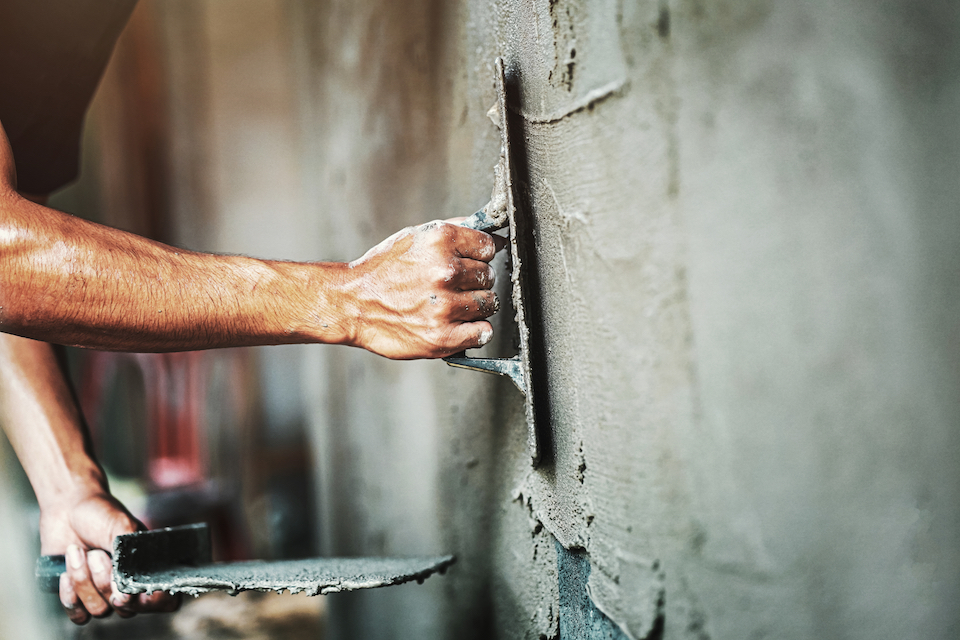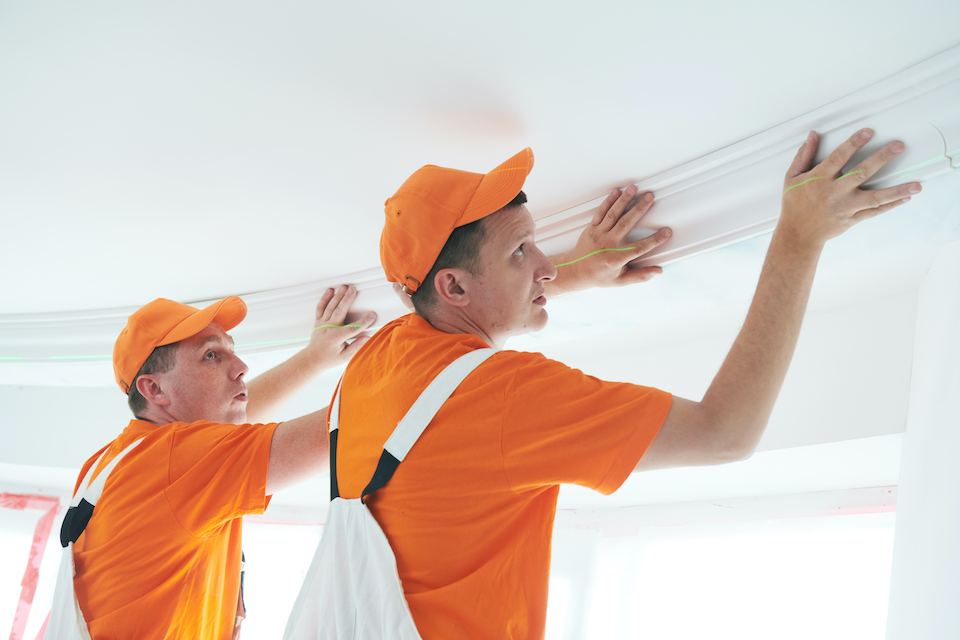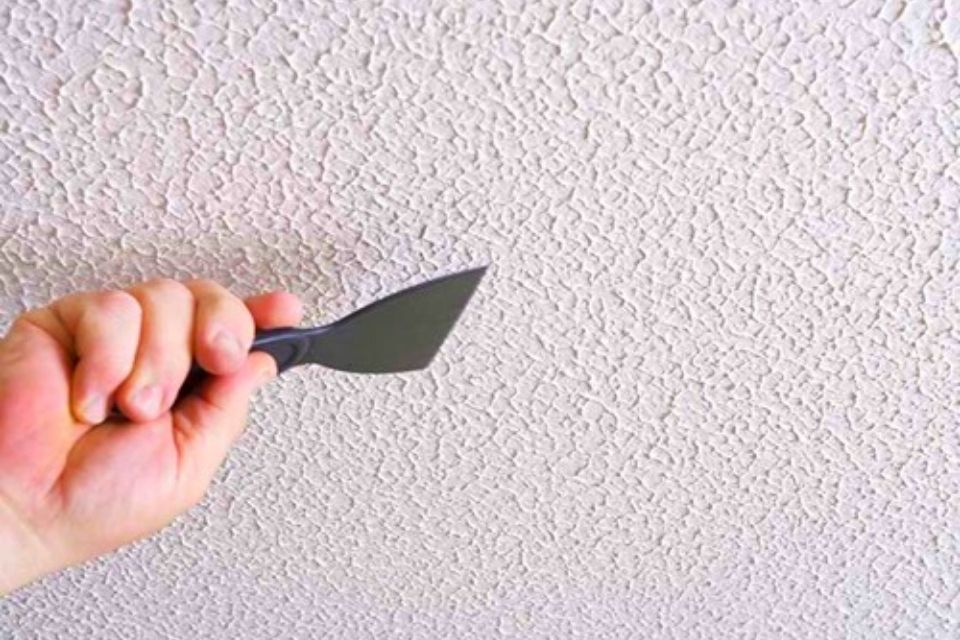How Much Does Plastering Cost in the UK?
A patch repair, for example, may cost between £70 - £130, whilst an over skim could cost between £100 - £200 depending on the size of the wall, whereas a full plastering job could cost twice as much.
Before VAT and other fees, a simple skimming job in a medium-sized room would cost roughly £500 - £700, while a full plastering job would cost around £700 - £1,200. London is likely to have higher skimming prices than the rest of the country.
The size of the area to be plastered, whether it's a single wall in a tiny room or multiple rooms and ceilings in a huge house, is a critical factor that determines the cost of plastering work.
This comprehensive guide will answer the following questions:
- How much do plasterers charge in the UK?
- What are the benefits of hiring a professional?
- How much do different types of plastering jobs cost?

Before estimating how long the task would take and how much material will be required, plasterers will measure the job and consider any relevant aspects.
How much a plasterer charges depends on how much experience they have, their level of expertise, and where you're located in the UK.
Plasterers in London and South-eastern England can charge up to 20% more than those in other parts of the country. The price of materials varies depending on the quality you want to use, too.
Let's get down to the costs...
The cost of plastering a room will, of course, be determined by the amount and difficulty of the work to be done.
If you're looking to get a more accurate price for plastering work, we can help connect you with plasterers near you.
But how much does it cost to plaster a ceiling?
Because of the skills and complexity involved, the cost of plastering a ceiling is higher than what you'd be quoted for plastering a wall.
You should expect the cost of plastering a ceiling to be between £150 - £750. You will likely need a specialist ceiling plasterer for this type of work.
The cost to replaster a room is generally more affordable than a full plastering job. It involves repairing or removing old plaster if necessary, establishing a new base layer, skimming the surface to get a smooth finish, and then adding any final touches.
What about the cost of external rendering?
Rendering costs vary greatly depending on the size of the project.
For example: A normal render and finish off a small building, such as a cottage, may cost roughly £2,000 – £3,000, whilst a large property, such as a separate four-bedroom farmhouse, might cost between £5,000 – £9,000.
Plastering Prices (2025)
So, how much to plaster a room in the UK?
The table below shows the average cost of plastering jobs in the UK.
| Plastering Job | Average Cost |
|---|---|
| Patch Repair | £70 – £130 |
| Skimming | £100 – £200 |
| Small Room | £400 – £500 |
| Medium Room | £500 – £700 |
| Full Plastering Work | £700 – £1,200 |
| Plastering a Ceiling | £150 – £750 |
| External Rendering | £2,000 – £5,000 |
Plastering costs are significantly dependent on the size of the area that needs to be plastered.
The plastering cost per m² is between £6 – £10, plus a daily fee of around £100 – £250. Plastering an average-sized room will take most plasterers a day or two to complete, but more experienced tradespeople might be more efficient than that.
You can use this information to approximate the cost of plastering a room in your home.
- How Much Does Plastering Cost in the UK?
- Labour Costs for Plastering Jobs
- Additional Plastering Costs
- Cost Affecting Factors of Plastering a Wall
- What Are the Costs of Plastering Materials?
- How to Plaster a Room
- How Long Do Plasterer Jobs Take?
- How Long Does New Plaster Take to Dry?
- Plastering vs Skimming – What’s the Difference?
- Types of Plaster Explained
- Cost of Plastering Jobs
- How do you find a good plasterer?
- FAQs
Labour Costs for Plastering Jobs
Plasterers typically charge between £6 – £10 per square metre, plus a daily fee of £100 – £250 (with areas such as London and the South East towards the higher end of the scale).
These costs will, of course, vary depending on how long the job takes, which is normally around a day for a minor repair and up to 2 days for plastering and skimming a wall.
Some plasterers will charge an hourly rate, which in the United Kingdom will be roughly £15 per hour for a standard room. Larger areas may cost up to £20 per hour (potentially more in some regions) or may also vary depending on experience.
The exact price can also depend on the complexity of the job, the size and time required, and any additional materials needed.
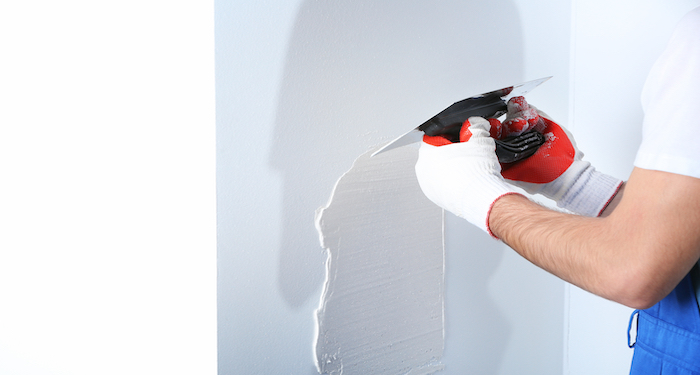
Additional Plastering Costs
When having rooms plastered, you may end up paying for additional costs that are either broken down within your quote or hadn't already been included within the price of the job.
Here we will discuss the different additional costs that could add to the total price.
Painting and Decorating Cost
After the plastering has been completed and left to dry, you may consider having the walls painted. The average cost of painting a room is between £180 and £600.
You'll also need to consider decorating other fixtures, such as skirting boards (between £180 to £350), and painting window frames (£400 - £1,500).
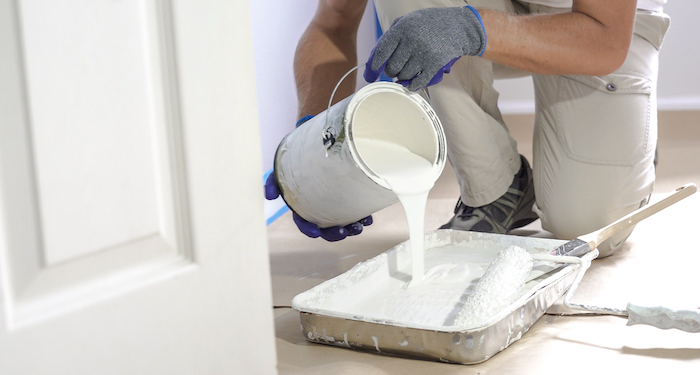
Skirting Board Fitting Cost
At this point, you may decide to have new skirting boards installed as a way to finish off the room nicely. Skirting board installation usually costs between £6 - £15 per m².
This includes supply and professional installation costs. However, the price will vary based on the kind you select, as there are several options available, including pine, primed MDF, ogee skirting, real oak, and others.
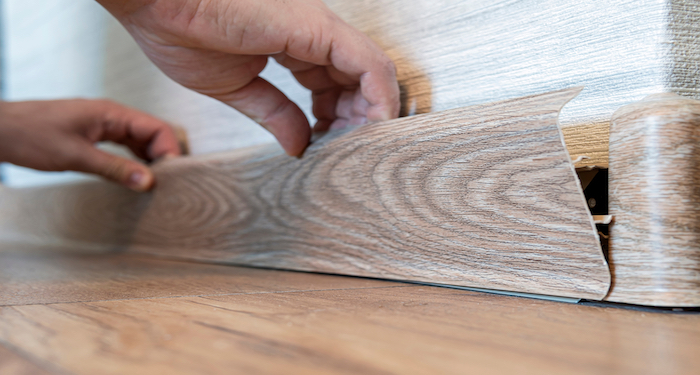
Scaffolding Hire Cost
For difficult or hard to reach areas, such as plastering on the stairs, and high internal walls, you may need to budget for scaffolding hire rather than expecting your tradesmen to climb a ladder.
The duration of hire needed and volume of scaffolding can impact the end cost, although for a relatively straightforward internal scaffolding tower expect to pay around £50 to £150 per week.
However, there may also be additional labour fees to cover delivery and erecting the scaffolding, so if required it is always best to double check first.
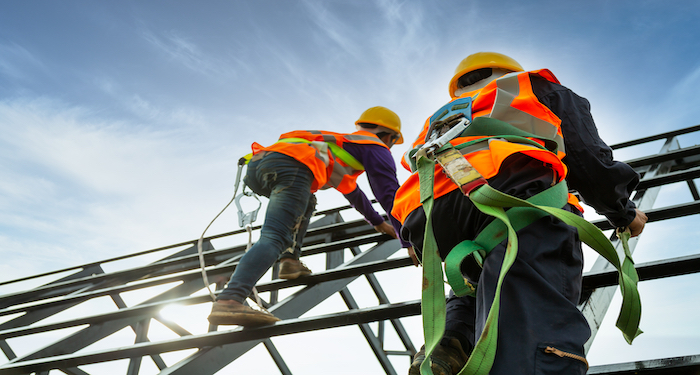
Cost Affecting Factors of Plastering a Wall
Labour fees may vary depending on the experience level of your plasterer and if they're working with a partner, however, there are also other cost affecting factors to consider:
- Wall Condition - Walls with damage need repairs before plastering, which can add to the overall cost and will vary depending on the extent of work required.
- Ease of Access - Hard to reach areas (such as high ceilings) or rooms with unusual layouts, can make the job more complex or take longer to complete, increasing the cost.
- Size of Area - Plasterers typically charge an hourly rate or between £6–£10 per m², so larger areas will naturally cost more than a simple repair job.
- Number of Walls - If you require a whole wall to be plastered, it goes without saying a single wall is likely to be less than a complete wall (albeit dependent on the size).
- Location - While our costs are based on National averages, if you are within London or the South East then expect to pay more for labour fees due to the higher cost of living.
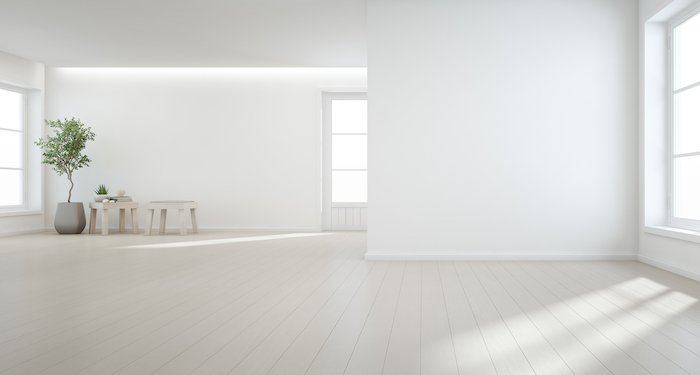
What Are the Costs of Plastering Materials?
If you are looking to purchase the materials yourself (without labour fees) pre-mixed plaster costs around £6 to £20 per bag and bonding agents will cost between £15 and £25 for every 5 litres. Then there's also the price of undercoat plaster and finishing plaster (less than £1.50 per kg).
Alternatively plasterboard prices typically range from around £5 to £20 per sheet, with an average sized living room requiring been 10 and 15 sheets in total (although this can vary depending on the size of room and type of plaster board used).
In order take on a plastering job as a DIY project, the following summary cost of plastering materials are under the assumption you already have the basic tools required - step ladder, trowel, spare bucket etc. Although may need to also purchase a paddle mixer (between £30 and £70).
Plasterboard Costs
Below is a summary for the average cost of plasterboard, listed by type, not including any labour.
| Plasterboard Type | Average Cost |
|---|---|
| Acoustic Plasterboard | £5 – £15 per sheet |
| Moisture Resistant Plasterboard | £5 – £10 per sheet |
| Insulated Plasterboard | £5 – £15 per sheet |
| Fire-Resistant Plasterboard | £5 – £20 per m² |
Plaster and Finishing Materials Cost
The following costs are a guide to key materials to consider when plastering yourself (so again, material costs only).
| Material | Average Cost |
|---|---|
| General Plaster Mix (25kg bag) | £6 – £20 |
| Undercoat Plaster | £0.70 – £1.20 per kg |
| Finishing Plaster | £0.20 – £0.90 per kg |
| Bonding Agents (5 litres) | £15 – £25 |
How to Plaster a Room
To help you understand further the timescales involved in plastering, here is a breakdown of what a typical plastering job entails, from preparation to finishing touches.
Room Preparation
The first step a plasterer will take is to protect the surrounding area. Dust sheets are put on floors and furniture to prevent any damage. This also helps catch falling debris and avoids contamination of the fresh plaster, which can affect the final finish.
Removing Existing Plaster
Before applying any new plaster, old or damaged plaster needs to be removed. This step ensures the new layer will stick properly and last longer. Tools such as a hammer and chisel or an electric drill may be used.
Priming the Surface
Once the walls are cleared and cleaned, they need to be primed. This can be done with a mixture of PVA (polyvinyl acetate) and water. The PVA solution is brushed onto the walls to help the plaster stick and dry evenly across the surface.
Mixing the Plaster
Most plasterers mix plaster on-site. The mix typically includes either gypsum or cement blended with water to create a smooth consistency. This is then applied using a trowel. Some jobs may involve dry-lining (plasterboard), which is quicker and involves less drying time, although it may not provide the same high-quality finish as wet plaster.
Applying the Base Coat
Plaster is applied in two coats. The first coat helps to even out the wall and cover any imperfections. The plasterer will use a hawk board, trowel, and float to apply and spread the plaster evenly, typically working in small sections at a time.
Skimming and Smoothing
After the first coat has set slightly, usually around 20 minutes, the plasterer will begin smoothing the surface. This involves running a clean trowel over the wall to flatten any ridges or bumps, paying close attention to edges and corners.
Optional Surface Scraping
Some plasterers may use a devilling float (a tool with protruding nails or teeth) to lightly score the first layer. This helps the second coat adhere more effectively and ensures a consistent finish.
Applying the Second Coat
Once the base layer is dry enough, the plasterer will apply a thinner, finer finishing coat. This layer is what gives the wall its final smooth texture and is key to achieving a polished, professional result.
Final Touches
To complete the job, the plasterer will spray a small amount of water onto the surface and use a clean trowel or wet brush to give the wall a final smooth down. Once fully dry, the plaster is ready to be painted or wallpapered.
How Long Do Plasterer Jobs Take?
Here, we will discuss the different durations that it takes to plaster. This section will discuss how long it takes to plaster a single wall, the ceiling, and tiny patch repair work.
We'll also go through some of the other elements that can affect how long it takes to finish plastering work in this section.
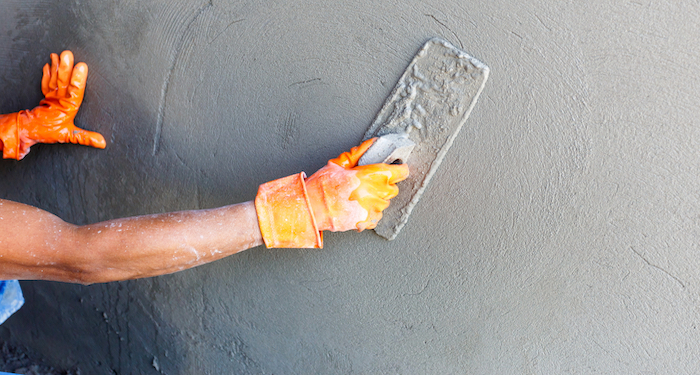
To plaster a single wall usually takes 3 – 4 hours to complete, but to plaster a whole room on average takes 1 – 2 days, and to plaster two rooms normally takes 2 – 4 days as it is a bigger job. Plastering a ceiling usually takes between 8 – 12 hours. To skim a whole room takes 1 – 2 days. And for small patch repairs, it normally only takes 2 – 3 hours.
The size of the area that requires plastering, the state of the area, and whether plasterboards are needed are all factors that might affect how long a plastering work takes. You must also evaluate whether simply skimming is required, if any waste removal jobs may be required, and your location in the United Kingdom.
The table below will show how long it takes to plaster a wall.
| Job | Timescale |
|---|---|
| Plaster a Single Wall | 3 – 4 Hours |
| Plaster a Whole Room | 1 – 2 Days |
| Plaster Two Rooms | 2 – 4 Days |
| Plaster a Ceiling | 8 – 12 Hours |
| Skim a Whole Room | 1 – 2 Days |
| Small Patch Repairs | 2 – 3 Hours |
How Long Does New Plaster Take to Dry?
If you want to paint your freshly plastered walls, you must wait until they are totally dry. Most paints will seal the wall's surface to some extent, keeping any moisture contained within the wall, and this can result in moist areas, mould, and efflorescence in some circumstances (salting).
You should wait 5 – 6 days for patch repairs if there is only a thin plaster coating. Because plaster on plasterboard dries quickly, you should wait 10 – 14 days before adding a mist coat to complete walls. Wait 14 – 21 days for a wall with two or three layers of plaster (often referred to as backing plaster).
If the property is damp, there is a lot of moisture in the air, or the job is done in the winter, the drying time should be increased by around 50%.
The table below will show how long you should wait for the plaster to be completely dry.
| Job | Duration to Dry |
|---|---|
| Small Patch Repairs | 5 – 6 Days |
| Adding a Mist Coat | 14 – 21 Days |
| Backing Plaster | 10 – 14 Days |
Plastering vs Skimming – What’s the Difference?
Many UK homeowners are unsure about the difference between plastering and skimming. While both techniques are used to create smooth interior walls, they serve slightly different purposes and are suitable in different situations. The below comparison will help you understand which option is best for your project.
| Aspect | Plastering | Skimming |
|---|---|---|
| Thickness | Typically 12–20mm in total (base and finish coats) | Usually 2–5mm (thin top coat) |
| Purpose | Used on bare walls to build up a new surface from scratch | Applied over existing plaster or plasterboard to refresh or smooth it |
| Drying Time | Can take 1–3 weeks depending on layers and conditions | Dries faster – usually 1–2 weeks |
| Finish Quality | Creates a strong, long-lasting surface suitable for new builds or major renovations | Creates a smooth, paint-ready finish quickly |
| When It's Suitable | Ideal for damaged walls, bare brick, or full refurbishments | Best when the existing plaster is in good condition but needs a refresh |
If you're unsure whether your walls need a full plaster or just a skim, talk to a professional. They will be able to assess the surface condition and recommend the best option for your home.
Types of Plaster Explained
Choosing the right type of plaster is important to getting the finish you are after. Different plasters are used for different surfaces, conditions, and aesthetic goals. Below is a breakdown of the most common types of plaster used in UK homes, along with when to use them.
However, it's important to note the below prices may vary depending on factors such as location, the size of property or room and any additional complexities. As such, it's always a good idea to request quotes from more than one company before carrying the work.
Gypsum Plaster
Gypsum plaster is one of the most common modern options. It comes as a dry powder and is mixed with water to create a smooth, fast-setting paste.
It's fast drying, has a smooth finish and is easy to work with. It can however be susceptible to moisture damage, so not ideal for damp environments such as the kitchen or bathroom.
Best For: Interior walls and ceilings in dry, well-ventilated areas.
Lime Plaster
Lime plaster is a traditional option made from lime and sand. It has been used in older properties for centuries.
This plaster type is highly breathable, eco-friendly and great for period homes, eco-friendly. Due to its slower drying nature, more skill is required to apply it properly.
Best For: Heritage buildings and solid walls without cavity insulation.
Cement Render (Cement Plaster)
This type of plaster is used mainly for external walls. It’s a mix of cement, sand, and water that forms a hard finish.
It is moisture-resistant and durable, making it ideal for outdoor use. Due to how rigid it sets, cracks can appear if applied on flexible walls or walls without control joints.
Best For: External rendering or damp-prone areas like basements.
Browning Plaster (Undercoat)
Browning plaster is used as a base coat on more absorbent surfaces like brick or blockwork. It creates a rough layer for a finishing coat to bond to.
It helps provide depth and structure but must be covered by a finishing plaster.
Best For: As an undercoat on masonry walls.
Finishing Plaster
Also known as skim plaster, this is the topcoat that provides the final smooth finish. It’s applied over undercoat plaster, plasterboard, or previously plastered surfaces.
It creates the idea finish, ready for painting or wallpapering but as it offers no structural strength, it must go on a stable base.
Best For: Creating a decorative finish over base plaster or plasterboard.
Cost of Plastering Jobs
Plaster is a type of construction material used on both interior and exterior walls. Plastering internal walls aims to cover any rough or uneven parts and prepare the surface for paint or wallpaper. It is now well-recognised as the most widely used wall preparation material for preventing water damage and damp problems. Here, we'll go over the many types of plastering projects available.
Skimming Cost
Skimming is a plastering technique in which a thin coat of plaster is applied to the walls to create a smooth surface. The skim plaster is used to cover the plasterboard or cover an existing plaster finish. The 'ideal skimmed finish' is difficult to accomplish; it necessitates the use of a qualified professional with years of plastering experience.
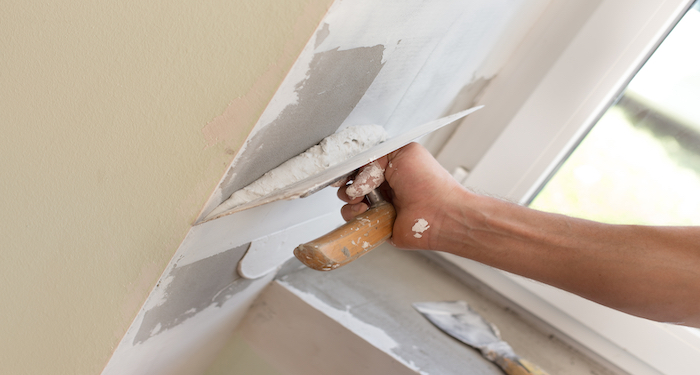
If an existing plaster wall is in good shape, it is unlikely to need to be skimmed. You can either paint or decorate directly on the plasterboard or finish with a layer of skim plaster if you've affixed plasterboard or drylining. The skim is preferred because it produces a better finish.
Skimming a wall is identical to plastering a wall, except it creates a smooth final layer that can subsequently be painted. The cost of materials is slightly lower, but labour costs are the same. Thus, a single wall will cost roughly £150 – £200.
Pros:
- Skimming is cheaper if your existing plaster just needs a freshening up.
- It provides a good finish ready for decorating.
Cons:
- May not be an option if your plaster work is in bad shape.
Dry Wall Cost
Drywall consists of large chunks of pre-rendered material that can directly adhere to the wall. However, it still requires finishing touches such as taping and jointing, plus it can be painted or wallpapered in a similar way to other surfaces.
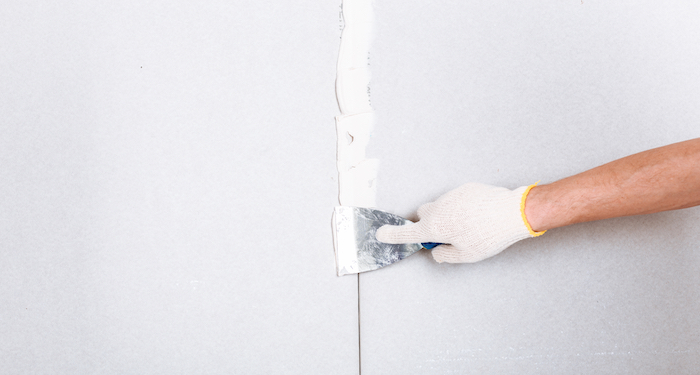
Even while you'll need to apply a couple more coats to the drywall – one to fill in any gaps that may have been made, a skim coat to cover it, and paint to give it colour - it's still a lot more convenient than wet plaster. The key benefit is that it can be prepared quickly and easily with minimal mess. As a result, labour costs may be significantly reduced.
The typical cost of drywalling a standard 12-foot square room (materials and labour included) is between £540 – £920, depending on the thickness of the panel and the finish desired, with the bonus of not having to wait for the plaster to cure before painting the walls.
To receive the greatest price for drywalling your home, request at least three bids.
Pros:
- It is easier than wet plaster as it takes less drying time.
- It can be prepared quickly and with minimal mess.
- It's a cheaper option as it takes less time to complete.
Cons:
- The finish may not be as good as a full replaster.
Taping and Jointing Cost
Covering and reinforcing the gaps between sheets of plasterboard on a wall or ceiling is known as taping and jointing.
This process is used to prepare a wall for decoration and is an alternative to skim coating, which involves applying a thin layer of plaster to the whole surface of the plasterboard.
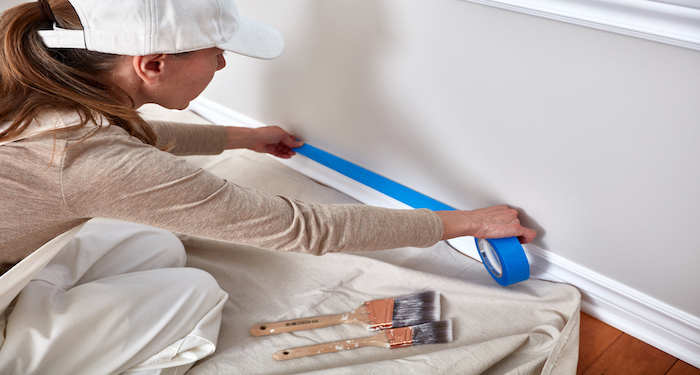
Joint tape is used to bridge the spaces between sheets of plasterboard during the taping and jointing process. The tape is embedded in a jointing compound to reinforce the plasterboard joints and prevent future fractures, sometimes known as 'mud.'
After that, a couple more layers of jointing compound are applied with a knife or trowel to create a smooth surface ready for painting or wallpapering. To mix the jointing compound into the wall, feather a plasterboard joint.
The plasterboard that has been taped and joined does not receive a final coat of plaster. As a result, it's critical to blend the jointing compound into the wall's surface to guarantee that the seams are level with the plasterboard's surface.
Pros:
- It is easier alternative to skimming.
Cons:
- It must be done correctly to ensure no joins are seen.
Rendering Cost
Exterior house rendering is the technique of a plasterer applying an external wall covering by hand and tools to protect the bricks or blocks from which the structure is constructed.
The cost of rendering in 2025 is between £10 – £70 per m². Cement rendering costs the least, at around £10 – £35 per m², and is the most popular option in the UK.
It is usually painted or coated with a wall coating to preserve the render surface from cracks or erosion. This will usually require a specialist external plasterer.
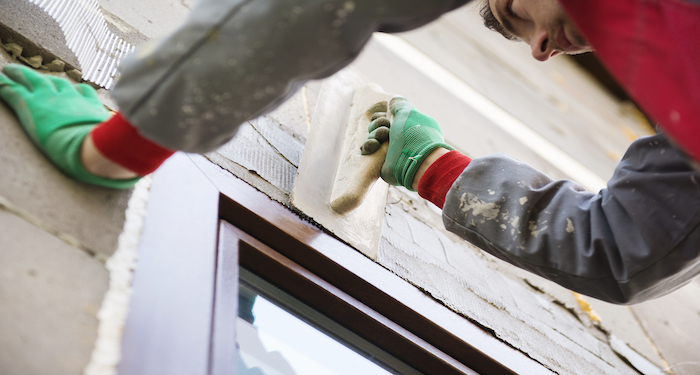
If your property's outside walls are covered in render, regular maintenance is essential to prevent cracking and damp penetration through the render and into the house.
With so many masonry paints on the market, it's important to think about more than just the colours; the finishing texture, weatherproof rating, and the number of layers necessary need to be addressed. All these elements can lower or raise the ultimate job cost.
Exterior masonry paint costs £10 – £25 per m² on average. For a tiny two-bedroom semi-detached house of 80m², the paint alone would cost between £800 – £2,000.
Pros:
- It creates a great weatherproof finish to the exterior of your home.
- It gives your home a brilliant aesthetically pleasing finish.
Cons:
- It can be very costly.
- Requires regular maintenance with painting.
Sand and Cement Plaster Cost
Cement plaster is manufactured by combining cement, sand, and water in a 1:4 cement-to-sand ratio. Depending on the surface to be plastered, the thickness of the plaster might range from 12mm – 20mm. Plasticisers are sometimes added to the plaster to protect the walls from parasites.
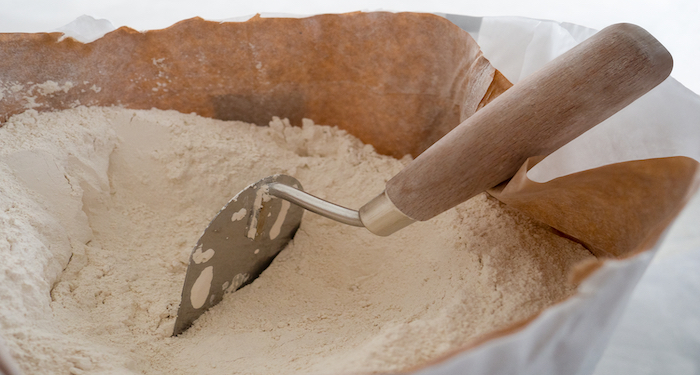
When it comes to plastering exterior walls, cement plaster is the ideal option because it is moisture-resistant and will protect the wall from both climate change and pollutants.
Furthermore, cement plaster's endurance makes it an excellent choice for internal plastering. The walls, particularly the hollow-concrete blocks, are strengthened by cement.
Plasterers will take between 4 – 6 days to complete, for £2,100 – £3,000.
Pros:
- It's moisture resistant.
- It protects the walls well.
Cons:
- It can be costly.
How do you find a good plasterer?
When it comes to finding the appropriate plasterer, there are a few things to consider.
- First, arm yourself with some fundamental knowledge.
- Find out how each plasterer plans to prepare for your project and how they intend to complete it.
- Choose someone with a wide range of experience.
- See what past customers had to say.
- Find out what credentials they have.
- Obtain a detailed quote from each tradesperson you're thinking about hiring.
- Never pay in full right away!
FAQs
Q: What qualifications does a plasterer need?
A: To become a plasterer, you might take a variety of paths. A college course, an apprenticeship, or on-the-job training can all help you get the certifications you need.
You should investigate these options to see which one is best for you. Although some of these possibilities will mention qualification criteria, many employers are looking for employees who are motivated, eager to learn, and can follow directions.
You may need a Construction Skills Certification Scheme (CSCS) card to work on a construction site.
Q: Do plasterers need insurance?
A: Whether you work as a Plasterer for a company or as a self-employed individual, you'll need specialised insurance to protect your livelihood.
Frequently, a policy with various coverage options, such as public liability, employer's liability, property damage coverage, and professional indemnity, will be required.
Q: What is the role of a plasterer?
A: Internal walls and ceilings are smoothed or given a decorative finish by plasterers, and external walls are also rendered and finished by them. To provide a room with a fresh vibe, restore damage, or bring a place back to life, a plasterer is required in most new buildings and many remodelling jobs.
Q: What skills does a plasterer need?
A: Here's a short list of the desirable skills of a plasterer in the UK:
- Excellent coordination of the hands and eyes
- Practical skills — you should be able to work with your hands and tools.
- Strength in the upper body
- Physical endurance
- Ability to operate under pressure and meet deadlines
- Ability to work as part of a team
- Good attention to detail Interpersonal skills, as you will be dealing with clients regularly
- Confidence with numbers – you must calculate the areas of the walls, ceilings, and floors, as well as the volume of materials required.
- Talent to create art (particularly for decorative jobs and fibrous plastering)
Q: Can you plaster over wallpaper?
A: It’s not recommended to plaster directly over wallpaper as it can lead to poor adhesion and long-term issues. Plaster needs a solid, stable surface to bond with. Wallpaper, especially if its old or peeling, can cause the plaster to crack or even fall away over time.

